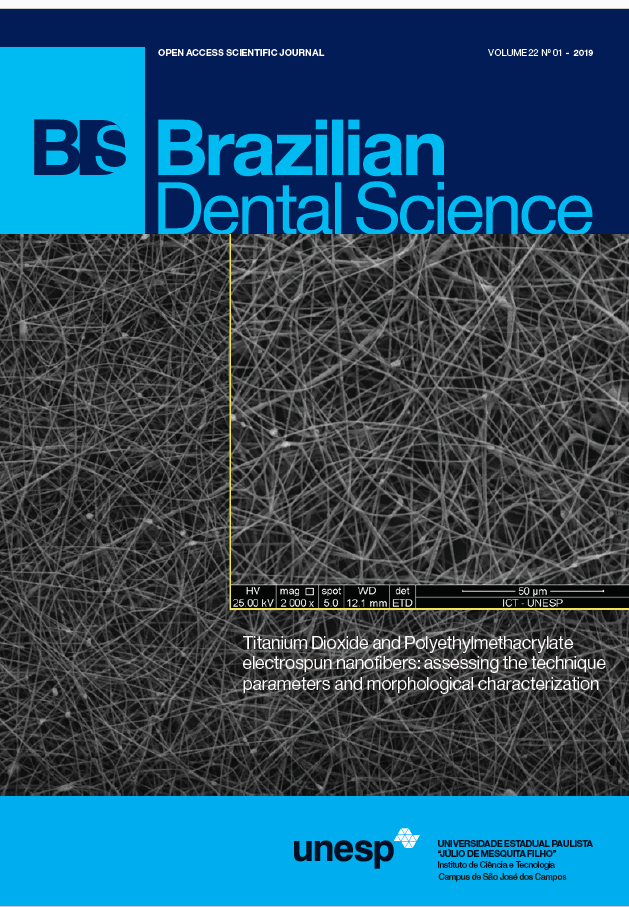Fracture strength of teeth with access cavity preparation with operating microscope or on buccal surfaces
DOI:
https://doi.org/10.14295/bds.2019.v22i1.1655Abstract
Objective: The present study assessed the fracture strength of teeth subjected to endodontic access cavity preparation on buccal surfaces, or with the aid of operating microscopy when compared to the conventional technique. Material and methods: Sixty mandibular incisors were split into four groups (n=15): conventional access cavity preparation (CCP); conservative (C); buccal surface (BS); and control. The canals were prepared and filled and the cavities were restored. A static compressive strength test was conducted until crown fracture. The force data were compiled and assessed statistically. Kolmogorov-Smirnov and Shapiro-Wilk tests were performed to assess normality, Levene’s test to assess variance homogeneity, the one-way ANOVA to compare fracture strength in the assessed groups. Tukey’s HSD test was used to determine whether the differences in the means were significant between the groups.Results: The experimental groups did not show any statistically significant differences in mean fracture strength (CCP = 585.65 N±107.64 N)(BS = 530.52 N±129.35 N) (C = 517.83 N±114.68 N). Conclusion: Therefore, the selection of surface or size of access cavity proposed did not influence the fracture strength of mandibular incisors when compared to conventional cavity preparation.
Keywords
Dental pulp cavity; Dental stress analysis; Root canal therapy.
Downloads
Downloads
Additional Files
Published
How to Cite
Issue
Section
License
Brazilian Dental Science uses the Creative Commons (CC-BY 4.0) license, thus preserving the integrity of articles in an open access environment. The journal allows the author to retain publishing rights without restrictions.
=================




























